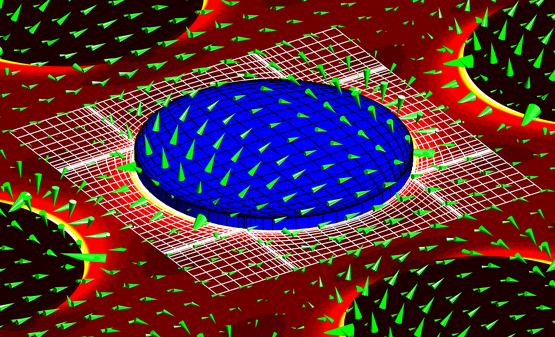Methodology
Our theoretical work relies on commercial software based on the finite-element method, as well as semi-analytical approaches and in-house numerical codes. Regarding the latter, we have implemented an advanced scattering matrix approach for periodic nanostructures based on the Fourier-modal method with adaptive coordinates. Our implementation significantly improves the convergence of the method, so that we are able to calculate the linear and nonlinear optical response of metallo-dielectric systems as well as chiral and non-reciprocal materials efficiently. Our code provides accurate results for far-field spectra, emitter calculations, near-field distributions, optical resonances, and density-of-states calculations.
Another in-house approach is the theory of resonant states and the related resonant-state expansion, where the resonant states of a given system can be used in order to describe its optical response and how this response changes under small and large modifications of the system. This is particularly useful for the optimization of sensors, the modeling of the influence of disorder, and the description of non-reciprocal and hybrid quantum and nanophotonic systems.
